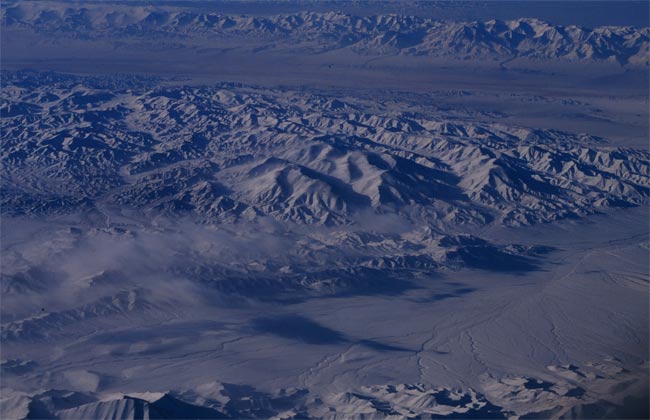Earth's Extremes Could Hold Clues to Mars Life

Resultsfrom a recent study of the microbes in China's remote deserts could help astrobiologistsrefine their maps for uncovering Martian life.
Ongoingstudies of Mars analogs on Earth havecombed the iciest regions and the driest areas. But the new study, published inthe Feb. 15 issue of the Journal of Geophysical Research-Biogeosciences,is the first comprehensive look at the microbiallife in the extreme deserts of China.
"If you goto the Dry Valleys in Antarctica, that is arguably the coldest place on Earth,and certain areas in the Atacama Desert are some of the driest on Earth," saidlead author Kimberley Warren-Rhodes of NASA Ames Research Center.
"What we didn'thave, and which is more similar to Mars, is a combination of those conditions,"she added, until now.
Harshlife
Warren-Rhodesand her colleagues, including her advisor Chris McKay of NASA Ames, examinedthe abundance and diversity of blue-green algae called cyanobacteria in severalspots in the extreme deserts of China.
They chosethree locations based on temperatures and amount of rainfall. One site, calledTokesun, was warm and dry and located about 500 feet (152 meters) below sealevel, making it the lowest point in China. Another site, called Ruoqiang, runsparallel to the southern edge of the Taklimakan Desert and is hot and wet.
Breaking space news, the latest updates on rocket launches, skywatching events and more!
The lastsite, Sorkuli, is situated along the Qinghai-Tibetan plateau and lies between8,200 feet and 9,840 feet (2,500 meters to 3,000 meters) above sea level. Thishigh-altitude desert included two climates: cold and dry, and cold and wet.
Like greenplants, cyanobacteria capture the sun's energy to carry out photosynthesis andturn inorganic ingredients into organic material needed for growth. On Earth, water isthe limiting factor for carrying out photosynthesis, and this would beparticularly true on the parched planet of Mars. But ecologists suspect that microbescan live within rock pores or beneath translucent rocks where moisture is mostlikely to remain, possibly on both planets
So the teamalso used data recorders at the Chinese sites to measure "micro-climate"conditions, including the relative humidity, moisture, temperature and lightlevels in the soil, beneath rocks and within pore spaces of rocks.
An increasein rainfall was typically associated with a spike in microbial density, butthere were other factors too. "Rainfall amounts primarily dictated the type ofmicrobial ecosystems we found across sites, but the effects of temperature,humidity and light created a gradient of soil water conditions suitable forlife as well," McKay said.
Microbialhideouts
Themicrobes preferred some tiny homes more than others, the scientists found. "Whenyou start talking about microbiology in a planetary sense, we work at theselarger scales, but it's this microclimate scale that's really important tothese organisms," Warren-Rhodes said.
"We'refinding that there are certain characteristics that make it more probable tofind [microbial life] than not in these really harsh deserts," Warren-Rhodessaid. One feature is rock size, with the larger rocks supporting higherdensities of cyanobacteria, presumably because they can store more water.
"We look atthese rocks, and these are small, just tens of centimeters. But to [microbes],that's like living on a huge mountain range," Warren-Rhodes told SPACE.com."Think of the variations from the top to the bottom of a mountain range andthat's what's important to these microbes."
She added, "Sowe have to get into that perspective to understand the conditions that make onehabitat super-accommodating and one centimeter next door not so much."
Once lifetakes hold in a hostile environment, it could change its home-base to make itmore conducive for survival. "Many of these organisms exude certain types ofmaterial that may act as sponges in their environment," Warren-Rhodes said. The sticky substances are known as extracellular slime. "When [the substances] get wet, they swell to several times their original volume and may serve as a reservoir for water in extremely dry deserts," Warren-Rhodes explained.
Thescientists plan next to study the spatial distribution of microbes, along withthe associated climate features, in the Atacama Desert and in Antarctica.
- Images: Red Planet Revealed
- Antarctic Microbes Handle Mars-Like Conditions
- Video: A Wet Modern Mars?

